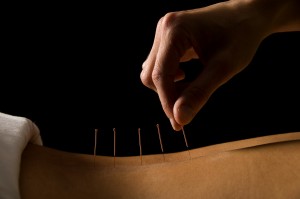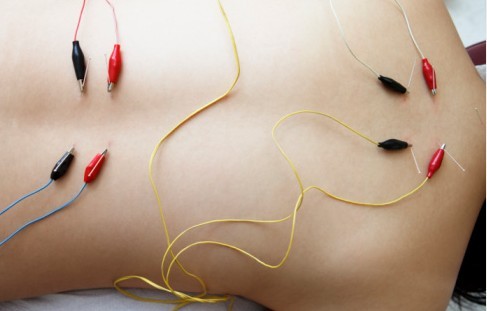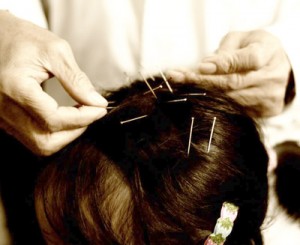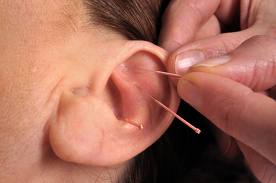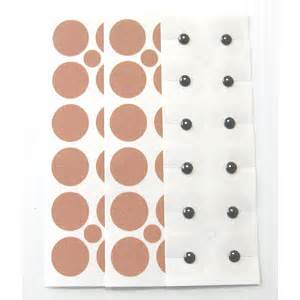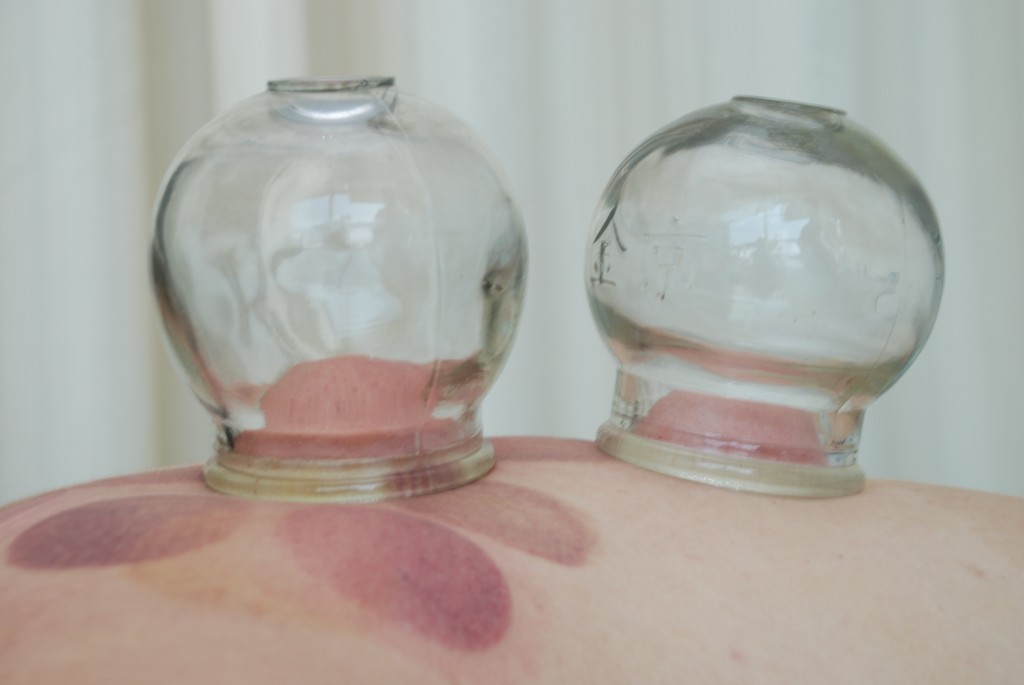Conditions We Treat
In Dr. Xie’s Acupuncture Clinic we treat patients with various conditions, especially patients with pain, sport injuries, women’s health, and emotional issues.
The National Institutes of Health (NIH) and the World Health Organization (WHO) recognizes acupuncture as being effective in treating more than 50 conditions. In addition Acupuncture and herbal treatments may also improve symptoms of many patients’ health issues.
Click to Read More
Services
Acupuncture is defined as a technique of inserting thin needles through the skin at specific points on the body to control pain and other symptoms. It is a type of complementary and alternative medicine.
Herbal Medicine Click to Read More
Chinese herbal medicine is an essential part of Traditional Chinese Medicine. Herbs are combined into specific formulas that will be used in conjunction with other forms of treatment to improve your health. When used properly, herbal medicine is virtually free of side effects.
Tuina acupressure Click to Read More
Acupressure and Tui na is a therapeutic treatment that utilizes massage techniques, acupressure, manipulations and stretches to treat and prevent disease. Tui na differs from other forms of body work in that the goal is not to sedate and relax the patient.
Nutrition, nourishment, or aliment, is the supply of materials – food – required by organisms and cells to stay alive. Nutrition consultation in Chinese Medicine is to provide clients the dietary advice combining appropriate foods and food-like Chinese herbs.
Popular Procedures
Chinese herbal medicine is an essential part of Traditional Chinese Medicine. For centuries, the Chinese have used the natural properties in herbal supplements to treat disease. Herbs are combined into specific formulas that will be used in conjunction with other forms of treatment to improve your health. Instead of the use of only single-herb in the treatment, Chinese Medicine typically individualizes multi-herbal formulation; these different herbs have been found to work together to have synergistic effects in order to potentiate the healing of the individual. By using these prescribed herbs at home, you will be increasing the effectiveness of treatments performed in the clinic. Individualized formulations are a critical and effective part to successful treatment. When used properly, herbal medicine is virtually free of side effects. When herbal products are given to a patient who is also using conventional medications, herb-drug interactions will be checked carefully to avoid any significant interactions.
Manual Acupuncture
Acupuncture is the insertion of thin metal needles into acupuncture points. The needles are hair-thin, solid, sterile and disposed of after each treatment. In manual acupuncture, manual manipulation are used to induce the De-qi, which is often translated to “obtaining the qi” or “arriving at the qi”, a heaviness or numbness, a soreness or achiness similar to a slight cramp. Manual acupuncture is sometime called traditional acupuncture.
Electro- Acupuncture
Electro-acupuncture is an acupuncture technique that apply electrical stimulation via acupuncture needles to acupuncture points to induce De-qi sensation. Some scholars believe electro-acupuncture was first used by physicians in France and Italy as far back as the early 1800s. Others attribute its discovery to Japanese scientists in the 1940s who were interested in making bone fractures heal more quickly. Still others claim that electro-acupuncture wasn’t really developed until 1958, when acupuncturists in China began experimenting with it as a form of pain relief. Whatever the case, electro-acupuncture is an increasingly popular form of treatment, and is used by practitioners of traditional Chinese medicine for a wide array of conditions.
Scalp acupuncture
Scalp acupuncture is an acupuncture technique in which acupuncture needles are used to stimulate the scalp areas corresponding to the diseased area of the brain in order to facilitate a return of function in that area. This method is based on elementary functional neuroanatomy, and has not much to do with traditional acupuncture meridian theory. If part of the brain is damaged, for instance by a stroke, then the scalp is stimulated over the damaged area of the brain. All the scalp points are representations of the underlying functional areas of the brain. There are several different styles of scalp acupuncture, e.g., Jiao’s Style, Dr. Ming Qing Zhu’s style, and Yamamoto New Scalp acupuncture, etc. In our clinic we used a method that combining Jiao’s style and Dr. Zhu’s technique. Dr. J also used the scalp acupuncture techniques developed by Professor Jin Rui in Guangzhou University of Chinese Medicine.
Ear Acupuncture with needles or seeds
Ear acupuncture is the insertion of thin metal needles into acupuncture points in the ear, or placement herbal seeds or magnetic pieces in the ear point for constant therapeutic stimulation. The practice is a form of acupuncture based on the theory that the ear is a microsystem which reflects the entire brain represented on the outer portion of the ear. There are currently several different, but very similar styles of ear acupuncture. Ear acupuncture is often used as an an additional treatment to increase the effectiveness of manual acupuncture or electro-acupuncture. Sometimes it is used singly to help smoking cessation and substance withdrawal.
Tui Na and Acupressure
Acupressure and Tui na is a therapeutic treatment that utilizes massage techniques, acupressure, manipulations and stretches to treat and prevent disease. Tui na differs from other forms of body work in that the goal is not to sedate and relax the patient. Tui Na tends to be a more intense form of body work than others and some patients may feel sore after their first tui na treatment. Like acupuncture, tui na is based on the system of meridians in your body to restore your body Qi (energy) flow. Because tui na helps to restore the free flow of Qi and the natural balance of yin and yang, the whole body will feel relief.
Gua Sha
Gua Sha is a holistic treatment that utilizes a strategic stroking motion to break up the stagnation of blood flow. This technique is highly effective for relieving pain. Gua is the act of scraping or rubbing. This rubbing motion causes Sha, a raised redness (petechiae) on the skin. Before treatment a lubricating oil is applied to the area being treated. A smooth-edged instrument is then used to stroke the skin. This movement encourages the blood to flow more smoothly thus easing pain. This rubbing action causes the blood in the subcutaneous tissue to raise. The red bump that results should fade in a few days. The tools for this purpose may be a ceramic Chinese soup spoon, water buffalo horn, or jade. Gua Sha therapy is used to treat excessive (replete) conditions. It drains the stagnation to promote healing, and to reduce inflammation and pain.
Magnet Therapy
Magnets may be used instead of needles on acupuncture points to generate a mild and constant stimulation. There are magnets with various strength (gauss) available for this purpose. The magnets with high gauss are usually placed on the points for a short period of time (20-30 minutes). The magnets with lower gauss (e.g.,800 gauss or lower) may be placed on sensitive points with adhesive tape for 24-48 hours as an additional treatment to increase the effectiveness of regular acupuncture. Although it is controversial, magnet therapy is not used in patients with pacemakers, pregnant patients and patients with cancer.
TDP Lamp and Infrared (heat) therapy
The TDP Mineral Lamp features a plate coated with a formulation of 33 minerals for your body. TDP Mineral Lamps helps relieve muscle and joint stiffness, inflammation, muscle spasms, sprains and strains.When the Mineral Lamp is heated to a certain temperature, it emits the far Infrared mineral energy (FIM), resulting in many therapeutic benefits. The emitted FIM energy penetrates through tissues and stimulates micro circulation, delivering higher levels of oxygen and nutrients to the injured cells, while eliminating toxins and cellular waste. TDP lamp therapy is used to treated conditions classified as cold patterns according to the theory of Chinese medicine. It is often used together with regular or electro- acupuncture, Tui Na, cupping or Gua Sha therapies.
Moxibustion Thearpy
Moxibustion is the application of heat on an acupuncture point. The herb mugwort (Artemisia Vulgaris) is burned near an acupuncture point to regulate the physiological activity of the body. Moxibustion is most commonly applied using a stick of mugwort which is held by the practitioner over an acupuncture point. Mugwort may be used in combination with other medicinal substances (such as garlic, ginseng or salt) to create a natural barrier between the burning mugwort and your skin. Mugwort can also be placed on the end of a needle and then inserted into the body. This warms the needle while the needle is in the skin. Moxibustion produces a strong aroma which may bother some patients and should be used with caution when patients have respiratory problems. A liquid moxa technique in conjunction with a TDP heating lamp may help avoid the problem. Liquid moxa is applied to the affected area or acupuncture points chosen for stimulation similar to regular moxibustion. According to the theory of Chinese medicine moxibustion therapy is often used to treat conditions classified as a cold pattern.
Cupping
Cupping is an ancient technique that helps draw toxins out of the body. Cupping activates the stagnated systems consequently reducing the effects of disease and pain. During a typical cupping treatment, small glass cups and an open flame are used to create a vacuum effect on the skin. This opens the skin pores, which allows toxins to be released as Qi is encouraged to move throughout the body. The vacuum effect is also created with vacuum cupping set in which an open flame is not used. Cupping is a safe treatment but can cause mild swelling and bruising on the skin. The vacuum effect draws the skin up causing the skin to expand. These bruises are typically painless and will disappear within a few days. In our clinic we use both traditional open flame cupping and vacuum cupping. Cupping therapy can be used together with Tui Na, Gua Sha and regular acupuncture treatment.
Chinese Medicine Nutrition
Nutrition, nourishment, or aliment, is the supply of materials – food – required by organisms and cells to stay alive. Nutrition consultation in Chinese Medicine is to provide clients the dietary advice combining appropriate foods and food-like Chinese herbs. According to Chinese medicine theory foods are classified in a way similar to Chinese herbal medicines. For example there are foods with cold, cool, warm and hot properties. There are foods that nourish our bodies and foods that help eliminate or drain the pathogenic factors. When a clinical pattern is identified by the practitioner, certain foods are recommended to either tonify the body or eliminate the pathogenic factors in addition to the acupuncture treatments. There are also Chinese herbs that are suitable to be consumed like foods. They are called food-like herbs. These herbs are usually mild, with little or no side effect even in long term use. There are about 60 herbs listed as food-like herbs according to the reference published by China State Administration of Drugs. In the practice of Chinese nutrition, these herbs may be recommended to the patients and become a part of patient’s daily diets.


